Here Are All the Endangered Species in the World
Seeing these animals will inspire you to save them.
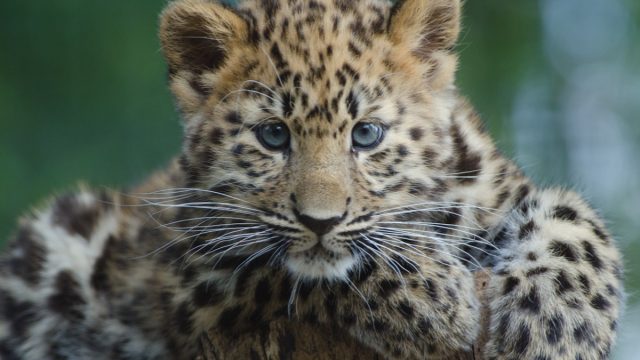
Everyone loves animals. But sadly, there are many species that are disappearing before our eyes. Due to various factors like pollution, shrinking habitats, climate change, and poaching, some animals have become completely extinct in the wild.
Thankfully, there are thousands of people and organizations dedicated to saving these vulnerable creatures. To show you exactly which animals are most at risk, we've rounded up a list of all the endangered species in the world, as well as what's being done to bring them back from the brink.
1
The South China Tiger

Population: Believed to be completely extinct in the wild
Although there were around 4,000 South China tigers in the world in the 1950s, they were nearly hunted into extinction in the following years because they were thought to be "pests," according to the World Wildlife Fund (WWF). Then, in the late 1970s, the Chinese government banned killing the creatures and they were deemed a "conservation priority" in 1995. Still, there were only 30 to 80 of the striped beasts found a year later.
Currently, the South China tiger is listed as critically endangered, but it's actually considered to be "functionally extinct" due to the fact that one hasn't been spotted in the wild for more than 25 years. According to One Kind Planet, there are around 100 of the animals living in captivity in China and in South Africa.
2
The Vaquita

Population: 30
You've likely never heard of the vaquita (which means "little cow" in Spanish), which may be because we didn't even discover these porpoises until 1958. Not to mention, there are only around 30 of them left, making them "the world's most rare marine mammal," according to the WWF. Another critically endangered creature, the vaquita face dire circumstances despite living in protected areas in Mexico's Gulf of California. Illegal fishing operations traps drown the underwater animals and have decimated their numbers to the point of near extinction.
3
The Javan Rhino
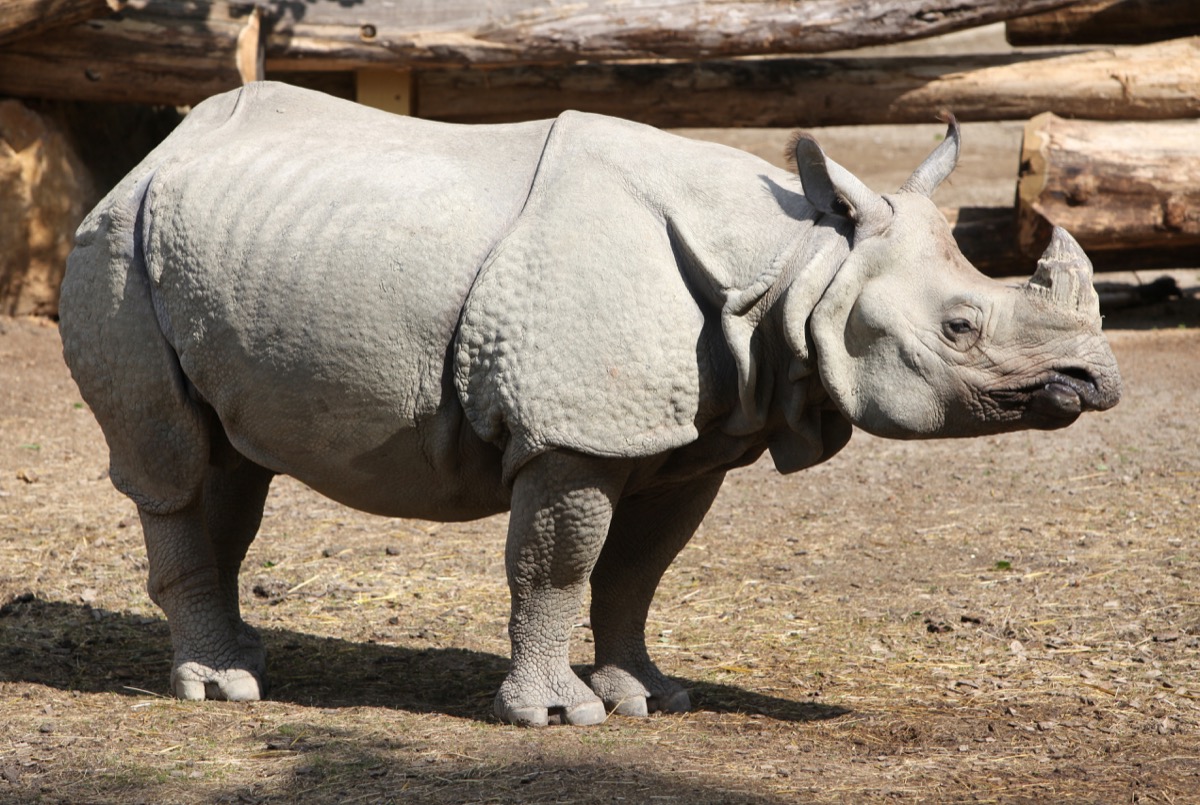
Population: 58 to 68
There are five different species of rhino; the Javan rhino is the one with the smallest population. While there were reportedly only 30 individual Javan rhinos back in 1967, there are currently as many as 68. Although all of the Javan rhinos live safely within the Ujung Kulon National Park in Java, Indonesia, there are still issues with breeding due to the fact that there are so few animals left, which reduces their genetic diversity.
4
The Sumatran Rhino

Population: 80
With a population that's almost as small as the Javan rhino, there are only around 80 individual Sumatran rhinos left. Considering just two females have given birth to babies in captivity within the last 15 years, there's a concern that these critically endangered creatures won't be able to come back from the brink. Because these animals face both habitat loss and poaching on top of low breeding, organizations like the WWF are actively trying to create protected areas for them in order to save the animals while we still can.
5
The Amur Leopard
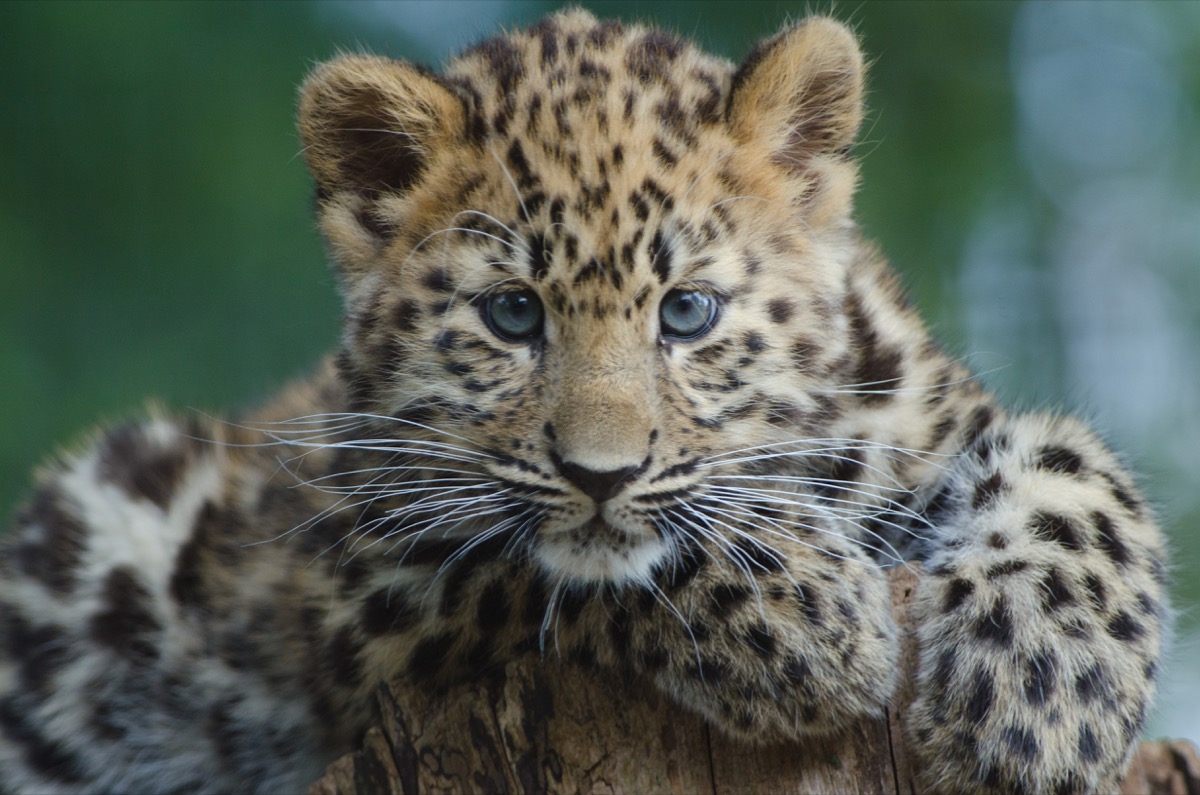
Population: About 84
The Amur leopard lives in the Russian Far East, and their numbers are thought to be so low for two main reasons. First, as logging cuts down forests, the small animals that would normally be meals for the leopards have nowhere to live, leaving the predators with nothing to eat. On top of that, the gorgeous leopards are also poached for their coats, which can sell for anywhere from $500 to $1,000.
Thankfully, along with other conservation efforts, a sanctuary has been created for the Amur leopard. "With the establishment of the Land of the Leopard National Park, in conjunction with other conservation efforts, we can now start to focus on how to begin bringing them back," said Dr. Sybille Klenzendorf, managing director of species conservation for the WWF.
6
The Cross River Gorilla

Population: 200 to 300
Scientists estimate that there are only around 200 to 300 Cross River gorillas still living in the wild. However, it's hard to nail down an exact number due to the fact that they are shy creatures who would rather not be spotted by curious (and potentially harmful) humans. Another species that is facing breeding issues around genetic diversity, the Cross River gorilla has been listed as critically endangered.
7
The Malayan Tiger

Population: 250 to 340
In 2004, DNA tests proved that the Malayan tiger, from the Malay Peninsula and the southern tip of Thailand, was a separate subspecies and not a branch of Indochinese tiger, as was previously believed (more on those guys soon). Sadly, there are only thought to be a few hundred of these relatively newly discovered creatures still around. That's because they face the same catastrophic concerns as other tigers (i.e. poaching and loss of habitat), which puts them in the critically endangered category.
8
The North Atlantic Right Whale
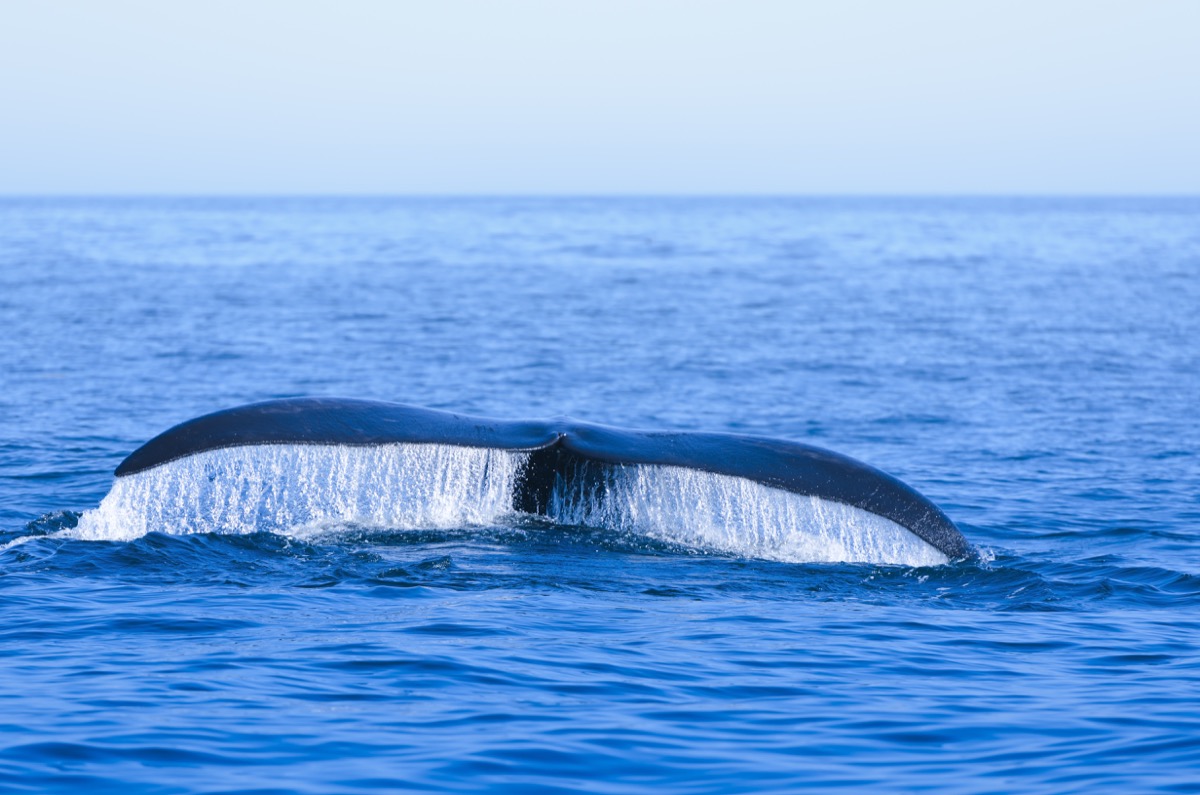
Population: 300 to 350
Nowadays, North Atlantic Right whales are primarily found along the Atlantic coast of North America, partly due to the fact that they may have already gone extinct in other areas of the ocean. Faced with dangers from climate change to ship collisions and fatal entanglements with fishing gear, the mighty beasts are on the endangered list with only 300 to 350 still in open waters.
In order to protect the creatures, shipping lanes were altered in Canada's Bay of Fundy in 2003, which, according to the WWF, "reduces the risk of ship strikes of right whales in Canadian waters by up to 80 percent." Hopefully, the same kind of measures will be taken in other North American waters where the whales are still victims of unfortunate (and apparently preventable) accidents.
9
The Indochinese Tiger
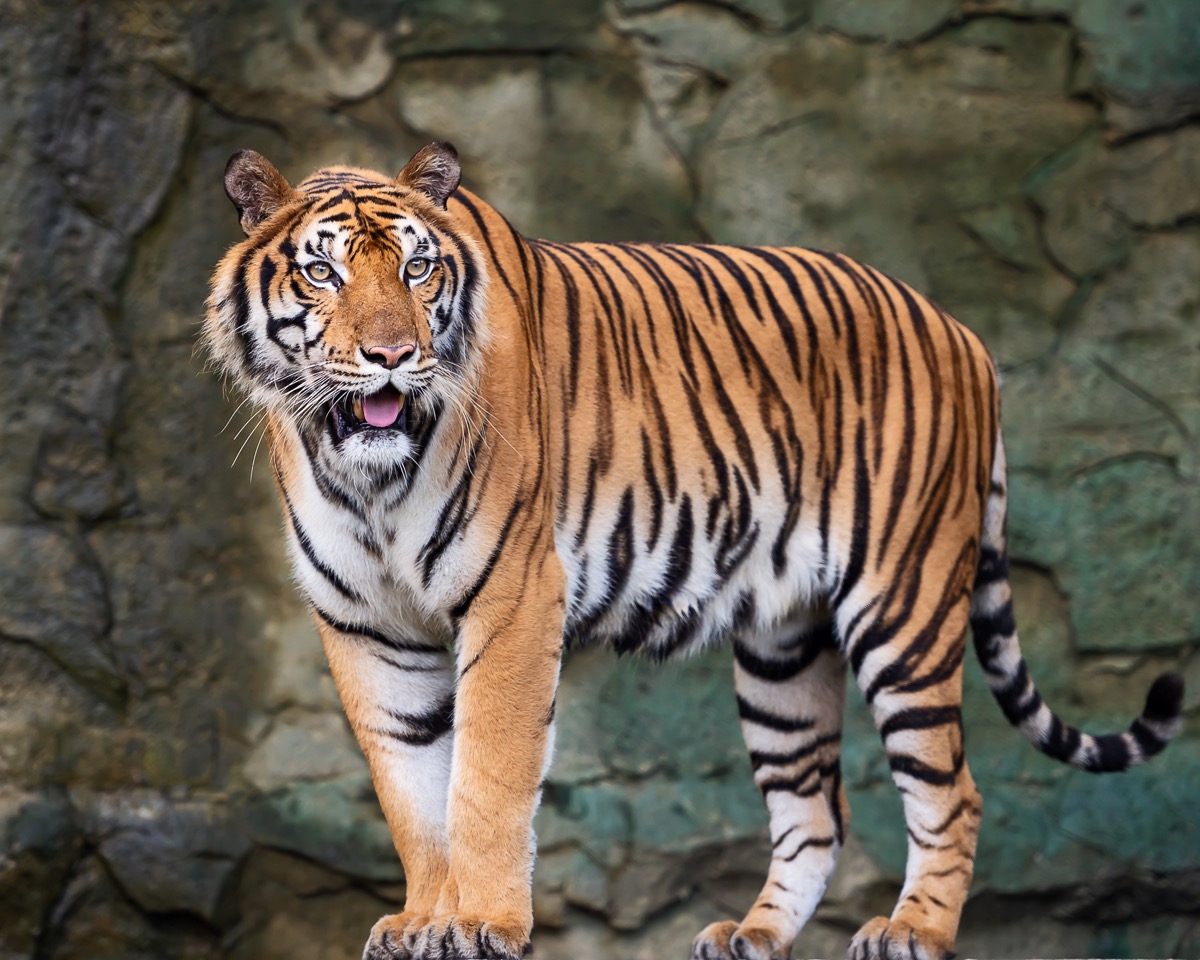
Population: Around 350
A 2010 estimate found that there were only around 350 Indochinese tigers still prowling around Thailand, Cambodia, China, Lao People's Democratic Republic, Myanmar, and Vietnam, which makes them another endangered species. According to the WWF, 2010 was the year they "sounded the alarm for the Indochinese tiger because the population of this subspecies had fallen by more than 70 percent in just over a decade," again, due to poaching and habitat loss. Like other tigers on this list, organizations and governments are trying to work together to create safe havens for these cherished creatures.
10
The Black-Footed Ferret
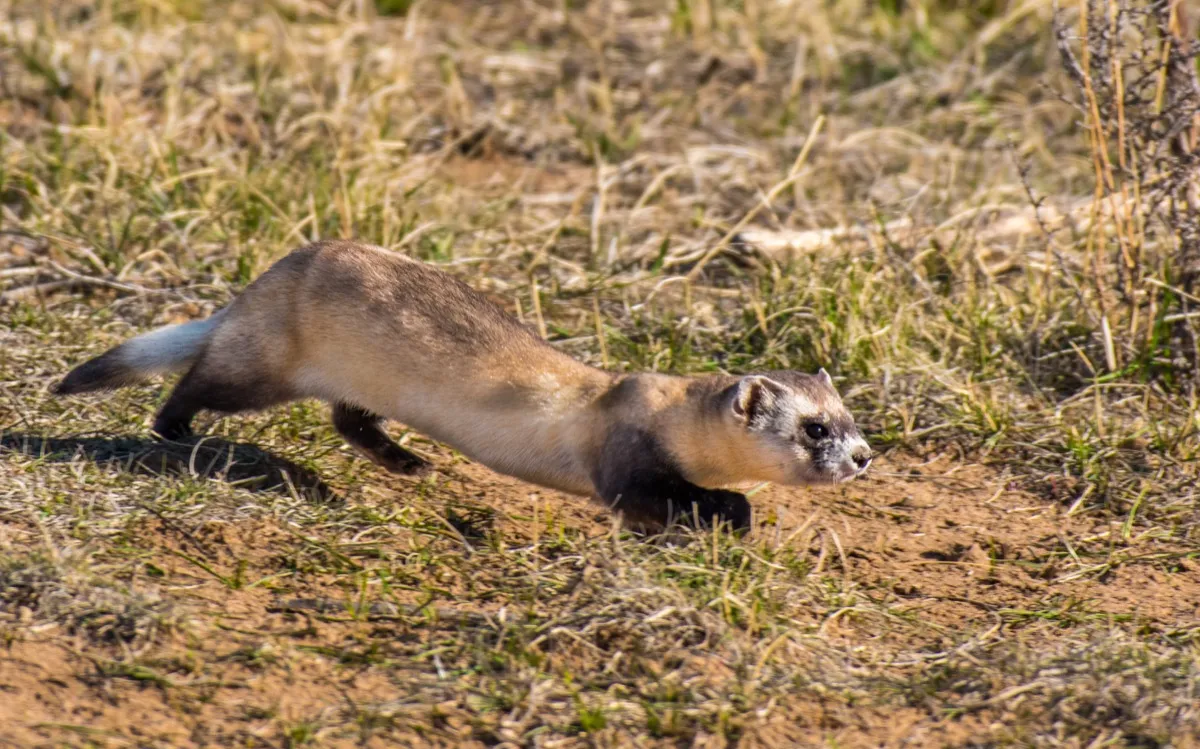
Population: Approximately 370 in the wild
Black-footed ferrets are increasing the size of their population after they were once believed to be extinct. Still considered an endangered animal, successful conservation and recovery efforts have seen the critter's numbers rise over the past few decades in North America, where they are one of the continent's most endangered mammals.
11
The Sumatran Tiger
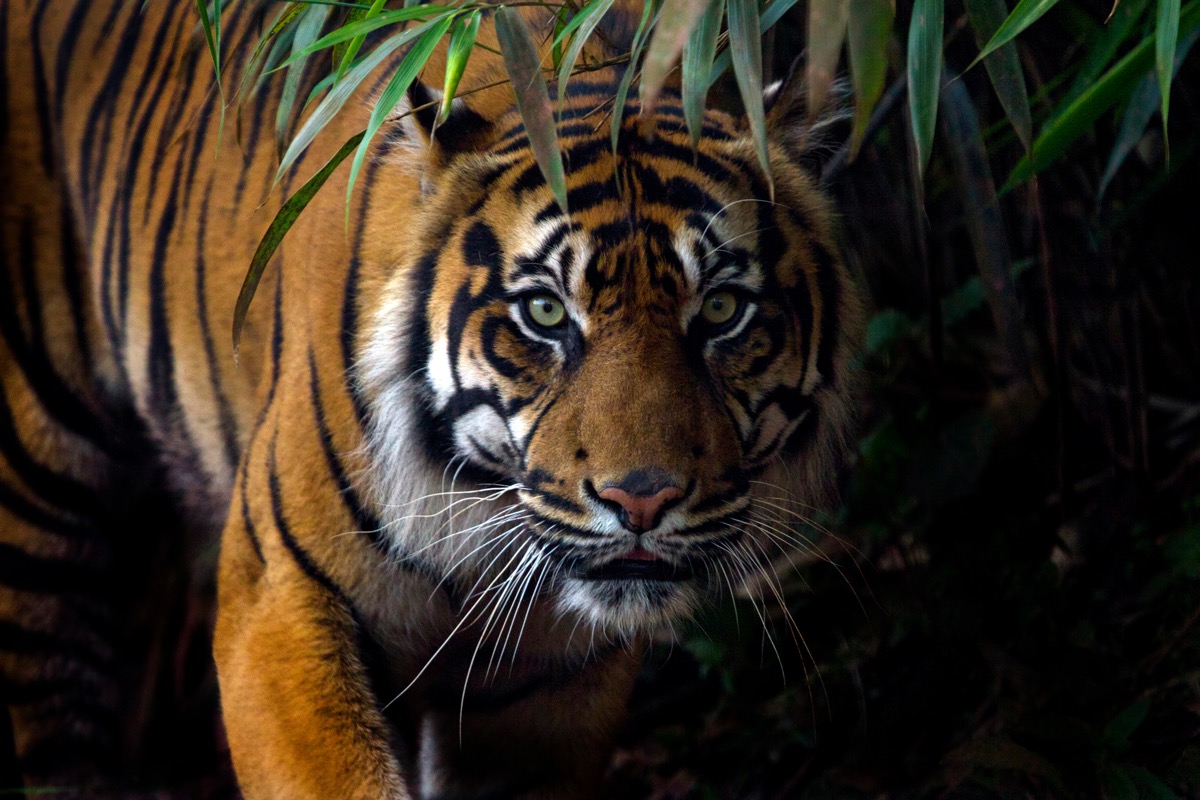
Population: Less than 400
Not only is the Sumatran rhino at serious risk, so is the Sumatran tiger. There are fewer than 400 of these critically endangered creatures living on the Indonesian island of Sumatra, which is down from the estimated 1,000 there were believed to be in 1978. Dr. Barney Long, an Asian Species Expert, told the WWF, "With so much deforestation and poaching in Sumatra, wild tigers face a very difficult future, but we have the tools available to reverse their decline if the clearance of their forest can be halted."
12
The Amur Tiger
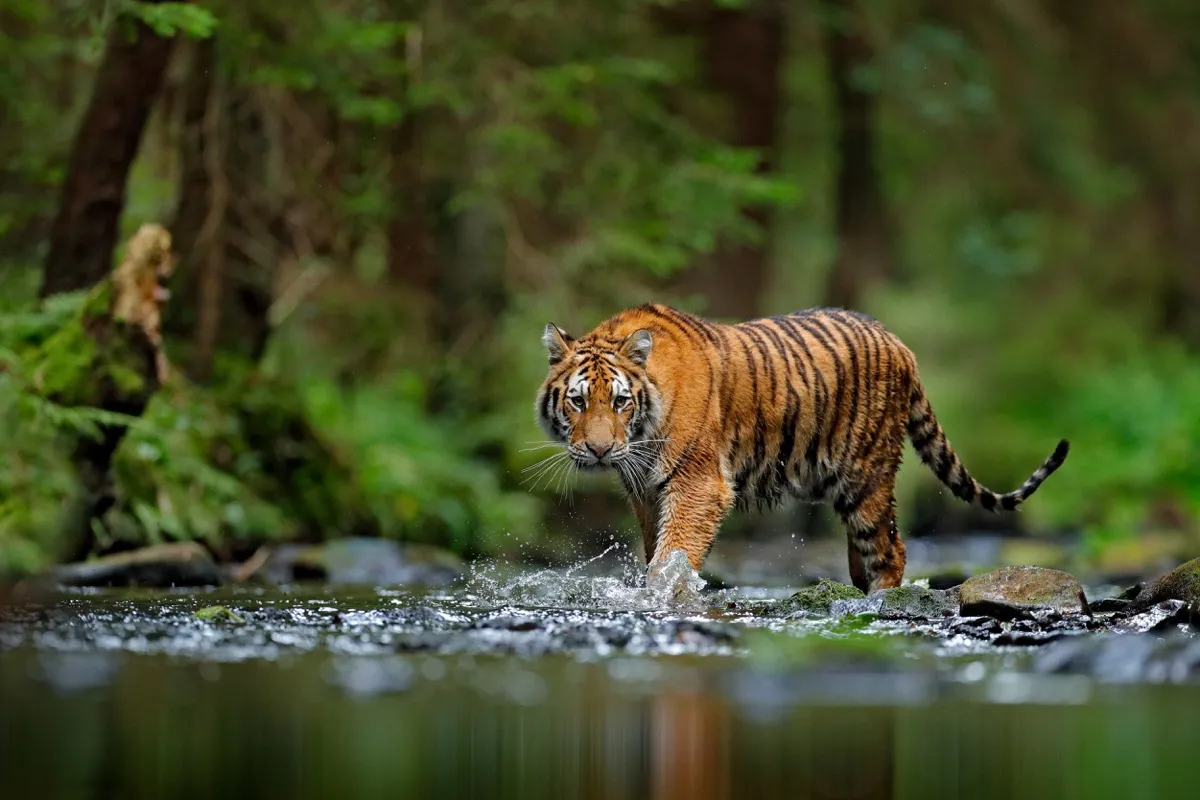
Population: As many as 540
While there are slightly more Amur tigers than Sumatran tigers, there are only around 540 of the formidable beasts, which means they are considered endangered. Almost going completely extinct in the 1940s after years of being hunted throughout the Russian Far East, northern China, and the Korean peninsula, there were only 40 Amur tigers left in the wild before Russia granted the animals full protection.
13
The Mountain Gorilla
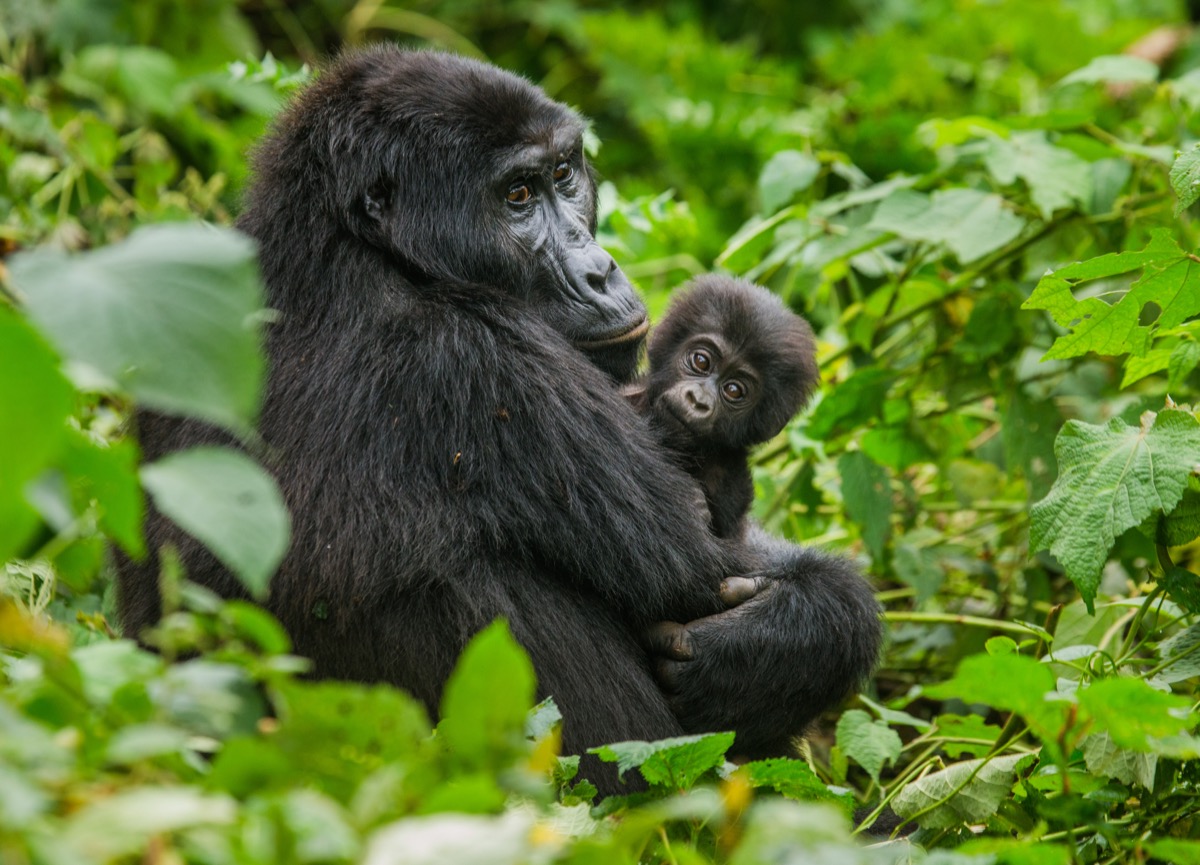
Population: More than 1,000
The mountain gorilla subspecies was discovered in 1902. But due to war, hunting, habitat destruction, and disease, just a century later, they are barely surviving. In fact, "it was once thought the species might be extinct by the end of the 20th century," the WWF explains. With drastic measures being taken to save and protect the animals' habitats throughout the Congo Basin in Central Africa, there are now more than 1,000 mighty mountain gorillas in the wild. Even celebrities like talk show host Ellen DeGeneres have taken action, setting up The Ellen Fund, which built a permanent home for The Dian Fossey Gorilla Fund.
14
The Yangtze Finless Porpoise

Population: 1,000 to 1,800
The Yangtze finless porpoise used to live alongside its cousin, the Baiji dolphin, in Asia's Yangtze River. However, in 2006 the Baiji dolphin was deemed functionally extinct, becoming the first species of dolphin to be driven to extinction by humans. Now, the Yangtze finless porpoise is considered critically endangered with just 1,000 to 1,8000 swimming in the wild. And they're still facing serious issues, such as pollution, dangerous encounters with boats, and low food supply because of overfishing. Thankfully, efforts are in place that aim to repopulate the food supply and curb overfishing.
15
The Ganges River Dolphin
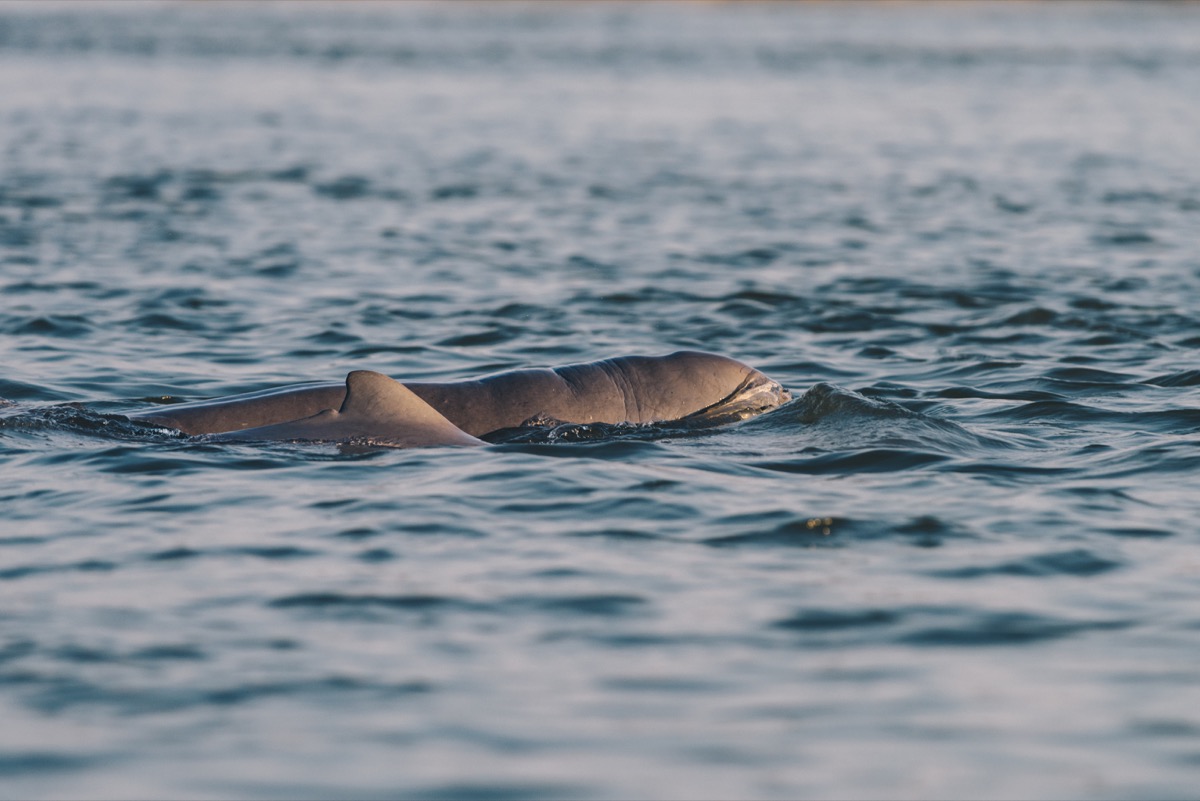
Population: 1,200 to 1,800
Found in Nepal, India, and Bangladesh, the Ganges River dolphin is another water-based mammal that's sadly made its way onto the list of endangered animals. With only 1,200 to 1,800 of the dolphin species in total, the creatures have already gone extinct in many areas where they used. Along with dealing with pollution, the WWF explains that the "Ganges river dolphin is still hunted for meat and oil, which are both used medicinally. The oil is also used to attract catfish in net fishery."
16
The African Wild Dog
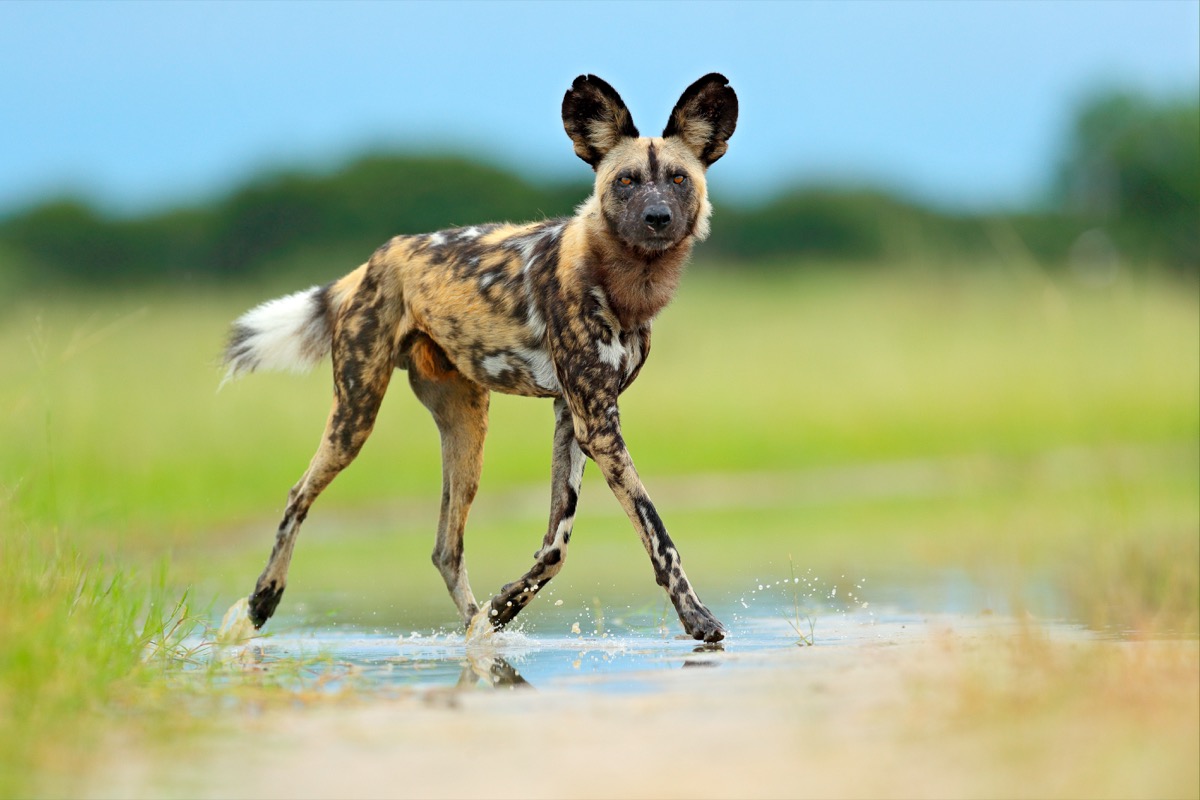
Population: 1,409
African wild dogs are dealing with a number of concerns that have decimated their population to a mere 1,409, making them an endangered species. Along with disease and habitat loss, these animals also have to face off against larger predators (such as lions) when it comes to competing for food, all while also dodging humans. Fortunately, in places like southern Tanzania and northern Mozambique, protected areas are being established where the African wild dogs can live in peace, which is why the population may now be as high as 6,600, according to the African Wildlife Foundation.
17
The Borneo Pygmy Elephant
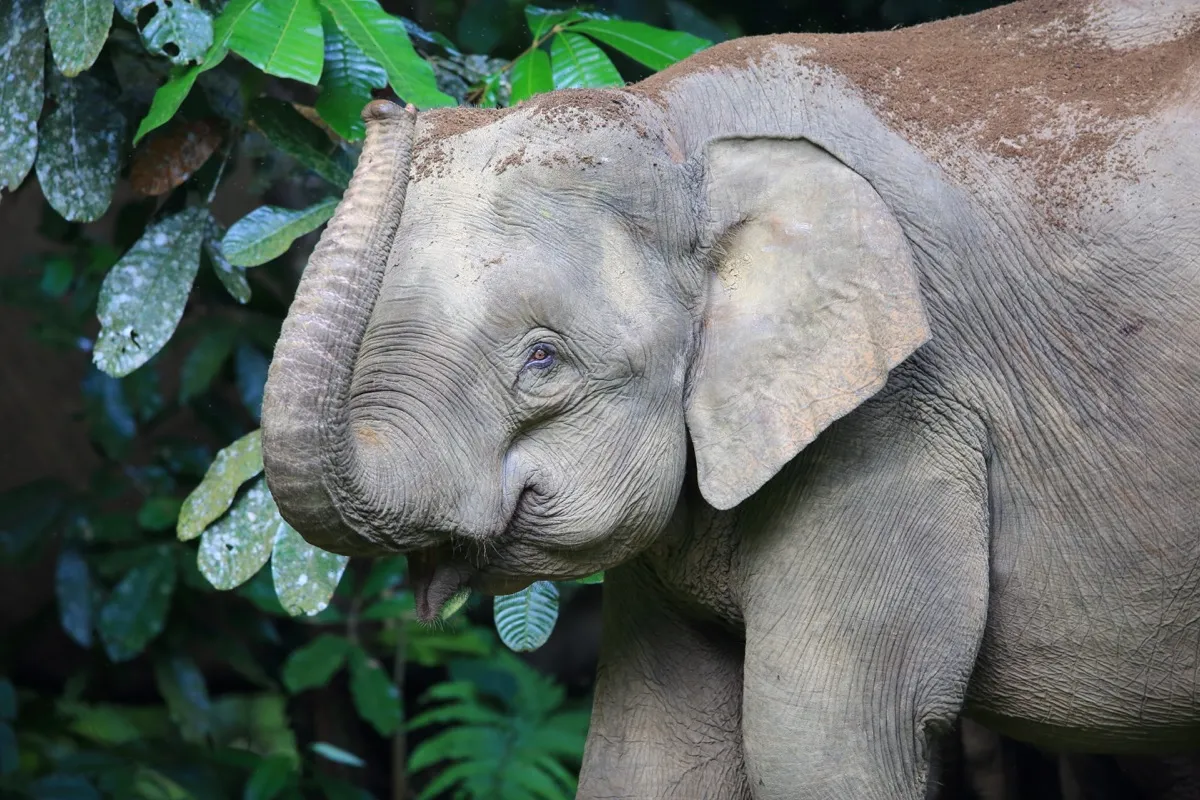
Population: Approximately 1,500
Borneo Pygmy elephants are forest-dwelling creatures, which means that they, unfortunately, come into contact with logging companies that are not only destroying the animals' homes, but also create dangerous situations due to illegal snares. With only around 1,500 of the endangered creatures left, tracking data is being used to hopefully help plan elephant-friendly areas and corridors where they will remain safe and sound.
18
The Indus River Dolphin

Population: 1,816
The endangered Indus River dolphin faces a number of threats to its population, including pollution, habitat loss, and poaching by locals who have to compete with the dolphins for the area's fish supply. However, according to a WWF study published in December 2017, there has been a whopping 50 percent rise in the population since 2001, "thanks largely to successful community-based conservation efforts."
19
The Galapagos Penguin

Population: Fewer than 2,000
The only species of its kind to make its home north of the equator, Galápagos penguins are another innocent victim of pollution and climate change, which is why there are fewer than 2,000 of the wonderful waddlers in the wild. They have also suffered seriously high mortality rates—up to a staggering 77 percent—as a result of devastating storms like El Niño. That's why the Galapagos Conservation Trust is trying to help the birds by funding projects that both monitor their population size and assess the pollution risk.
20
The Sumatran Elephant
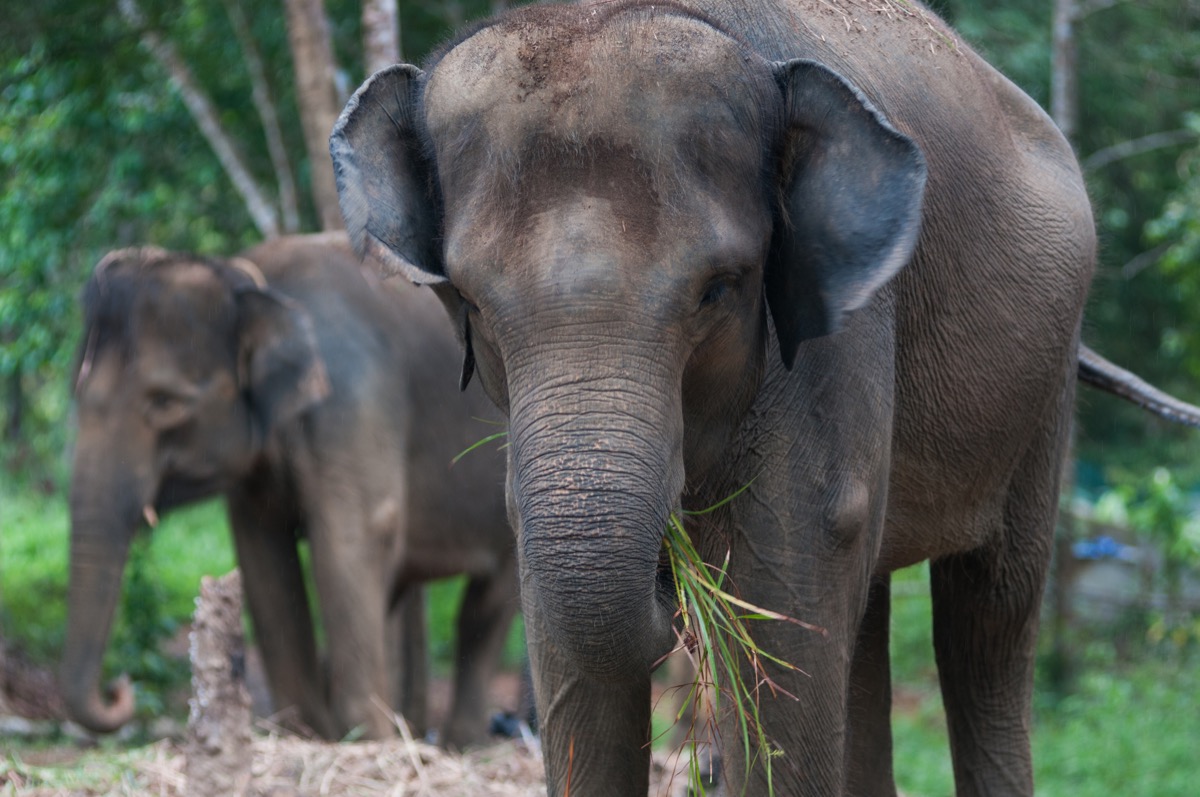
Population: 2,400 to 2,800
Joining the Sumatran rhino and the Sumatran tiger, the Sumatran elephant was considered endangered up until 2012 when it was then considered critically endangered, due to the fact that half of the creature's population was lost in a single generation. Like other animals who live in the forests of Sumatra, the elephants have suffered as a result of destructive logging and deforestation. "Unless deforestation on the island of Sumatra is halted, we could possibly see the Sumatran elephant be restricted to just a few remote populations within our lifetimes," says Long.
21
The Bengal Tiger
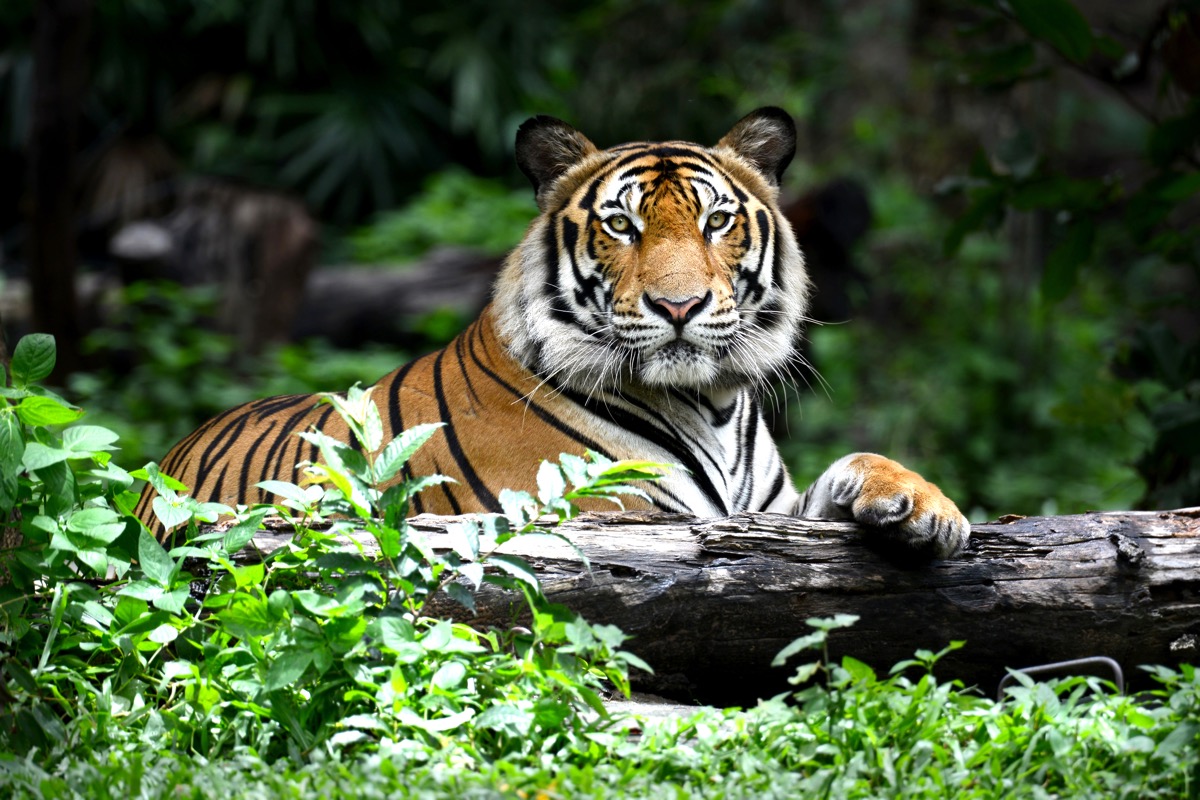
Population: More than 2,500
The Bengal tiger has the largest population of all tiger subspecies, however, there are still only 2,500 of them, which means that they fall into the endangered category. Helped by the establishment of animal reserves in India back in the 1970s, the tigers' numbers did see a rise. But they're still threatened by poaching and trophy hunters, according to National Geographic.
22
The Sri Lankan Elephant
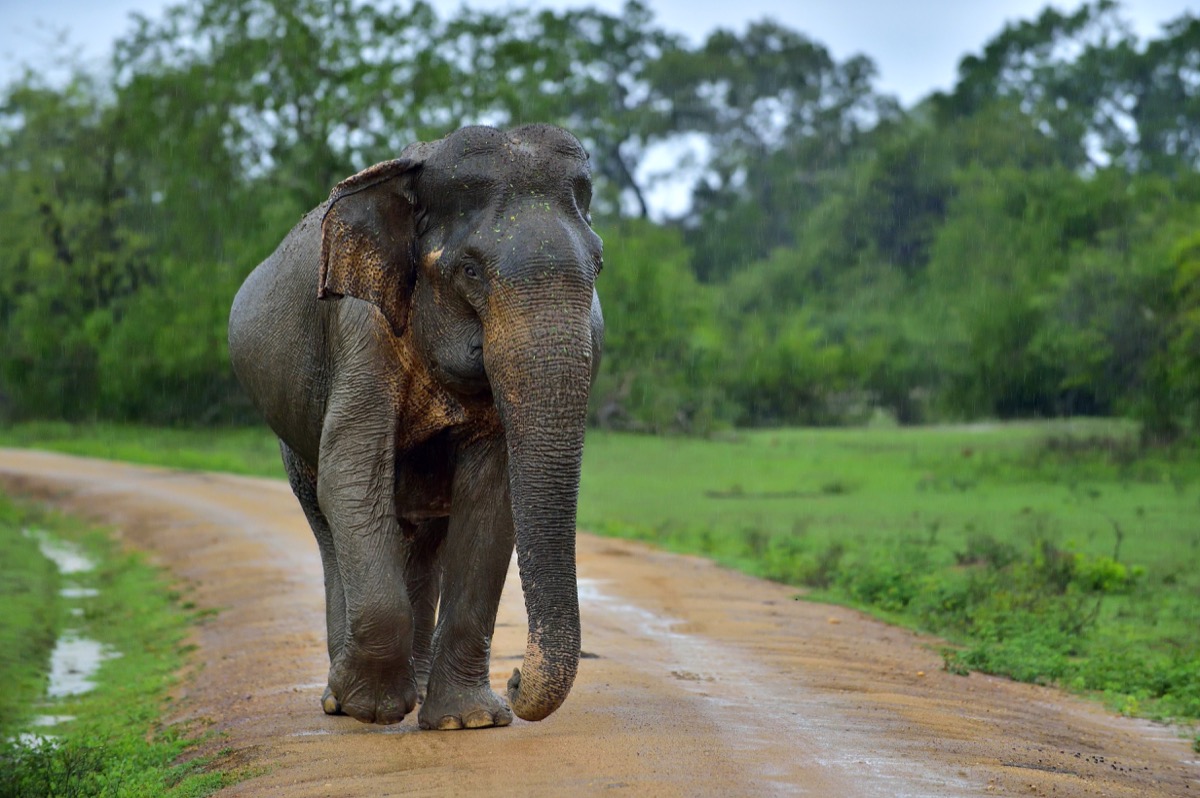
Population: 2,500 to 4,000
While Sri Lankan elephants are now protected by a law that can see hunters facing the death penalty, this species' population dropped nearly 65 percent since the turn of the 19th century, due primarily to destruction of their forest homes as well as conflicts with humans. WWF estimates that there are 2,500 to 4,000 still left.
23
The Black Rhino
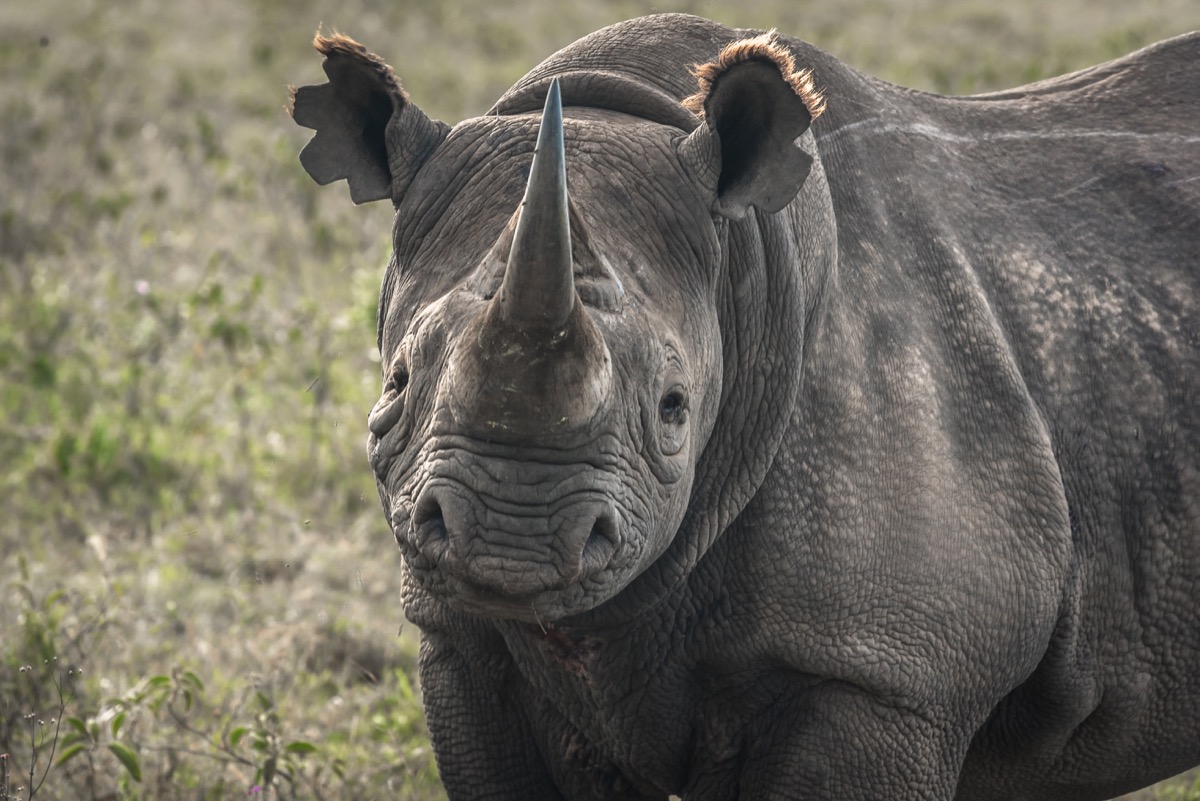
Population: 5,000 to 5,400
"Between 1960 and 1995, black rhino numbers dropped by a sobering 98 percent, to less than 2,500," according to the WWF. While they've "made a tremendous comeback from the brink of extinction" by doubling their population, they're still considered critically endangered and are threatened by habitat loss as well as illegal poaching and the black-market trafficking of the creatures' striking horns.
24
The Hector's Dolphin
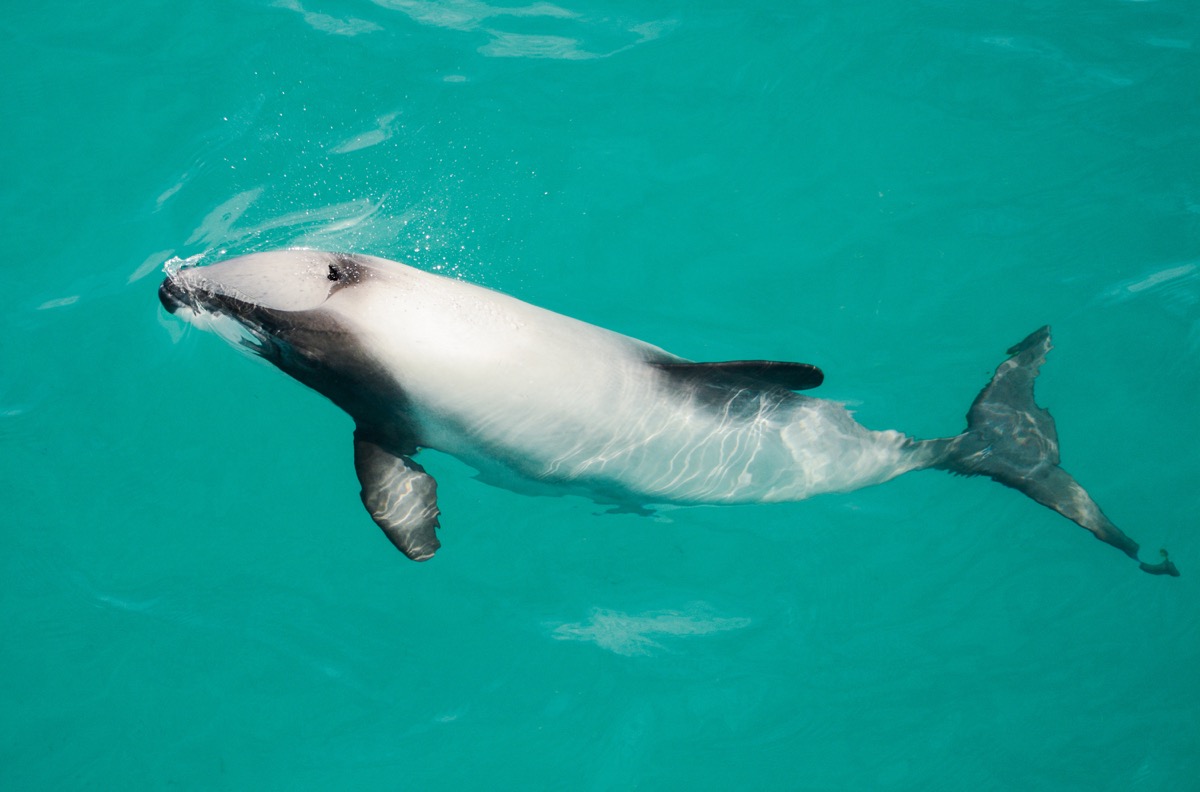
Population: Estimated at 7,000
While there are around 7,000 endangered Hector's dolphins swimming in the wild, there's a critically endangered subspecies of these creatures called Maui's dolphins. Only 55 Maui's dolphins live in the waters around New Zealand's North Island, according to the WWF. Due to the fact that they live near the shore, the dolphins find themselves caught up in and killed by commercial fishing nets, which is why action is being taken to limit or ban the use of the nets in the dolphins' natural habitat.
25
The Red Panda
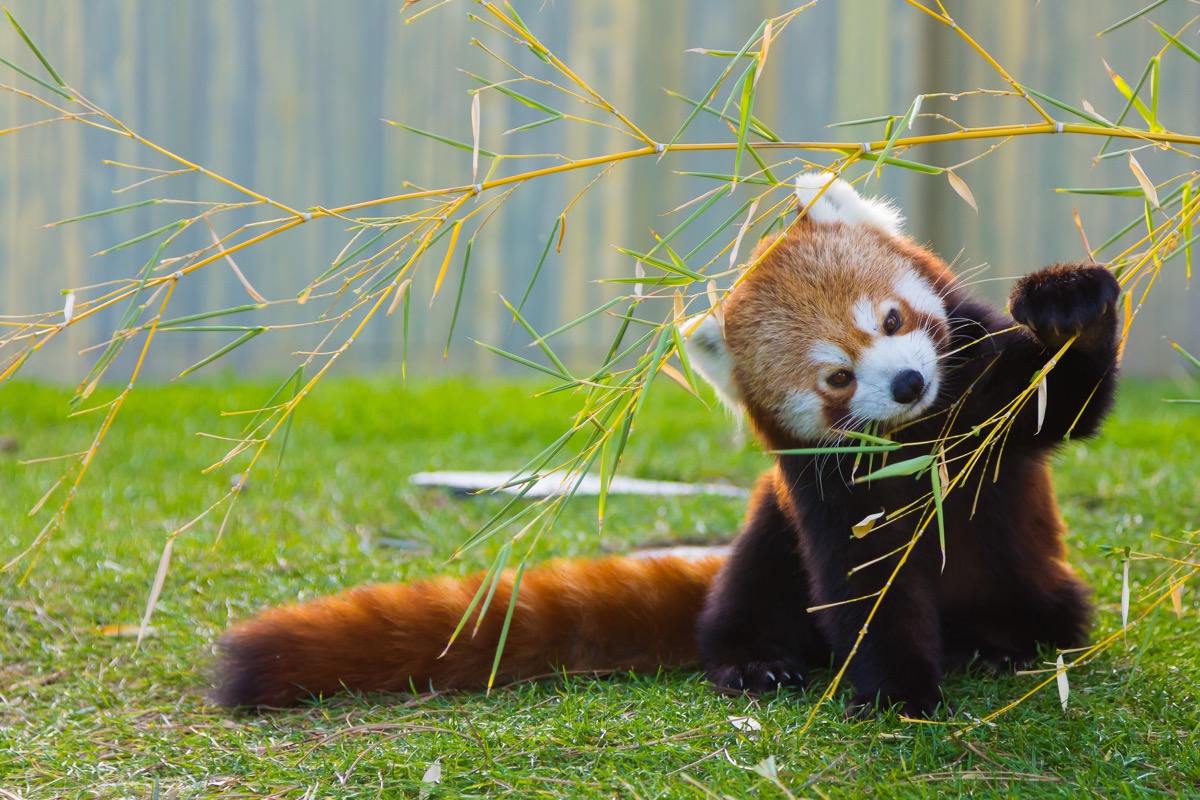
Population: Less than 10,000
While 10,000 are considerably more than the number of other animals on this list, it's still an unfortunately low number, which is why red pandas are in the endangered category. Along with facing fatal traps set for other creatures that share their home in the eastern Himalayas and southwestern China, the red pandas are also hunted by poachers for their coveted coats.
26
The Blue Whale

Population: 10,000 to 25,000
The largest animal on the planet, blue whales are also a target of whalers who hunt the peaceful giants. Despite efforts and laws aimed at protecting the whales from commercial hunting that date back to the mid-1960s, the creatures are still threatened by climate and environmental changes as well.
27
The Bonobo
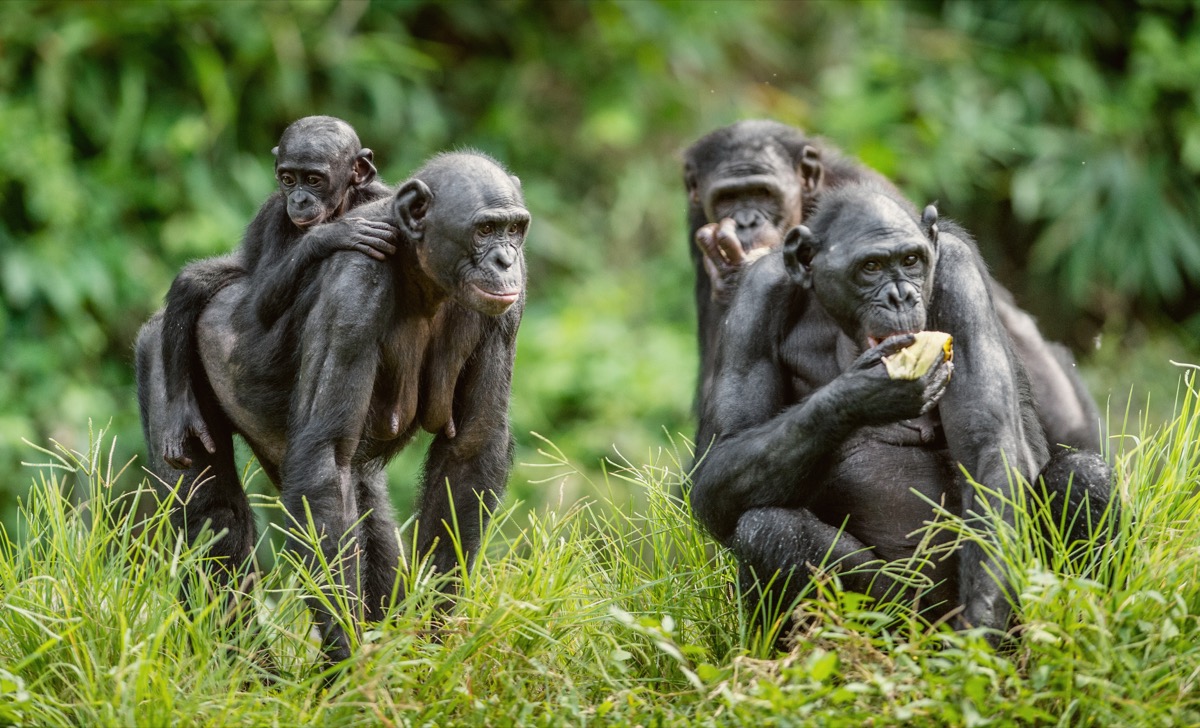
Population: 10,000 to 50,000
Much like a chimpanzee but slightly smaller, bonobos share 98.7 percent of their DNA with humans; yet it's human actions that threaten the endangered species. Both poaching and deforestation have contributed to the dwindling bonobo population, which struggles to recover due to ongoing issues, including low reproductive rates.
"Bonobos are fascinating creatures and little understood. They have the only great ape society led by females, with a sophisticated social structure that encourages cooperation and peace," said Dr. Richard Carroll, vice president of the WWF's Africa program.
28
The Sumatran Orangutan

Population: 14,613
Sumatran orangutans once lived across the island of Sumatra and into Java, but now exist in a much smaller area. The future of the critically endangered creatures "is inextricably linked to the islands fast-disappearing forests," explains Long. "If we want to save the Sumatran orangutan we have to save their forest home."
29
The Indian Elephant

Population: 20,000 to 25,000
Just like rhinos are hunted for their horns, Indian elephants are killed for their tusks. This illegal practice, along with human activity destroying the elephants' forest homes, has resulted in an endangered population. There are currently an estimated 20,000 to 25,000 Indian elephants in the wild, despite efforts to protect their land and reduce conflicts between the beasts and their human neighbors.
30
The Asian Elephant

Population: Fewer than 50,000
Another massive creature that's unfortunately found itself on the list of endangered animals, the Asian elephant has a population of fewer than 50,000 these days. Facing serious threats from habitat loss and deadly poaching, these elephants also deal with genetic diversity issues due to the fact that poachers are killing off breeding males for their tusks.
31
The Fin Whale
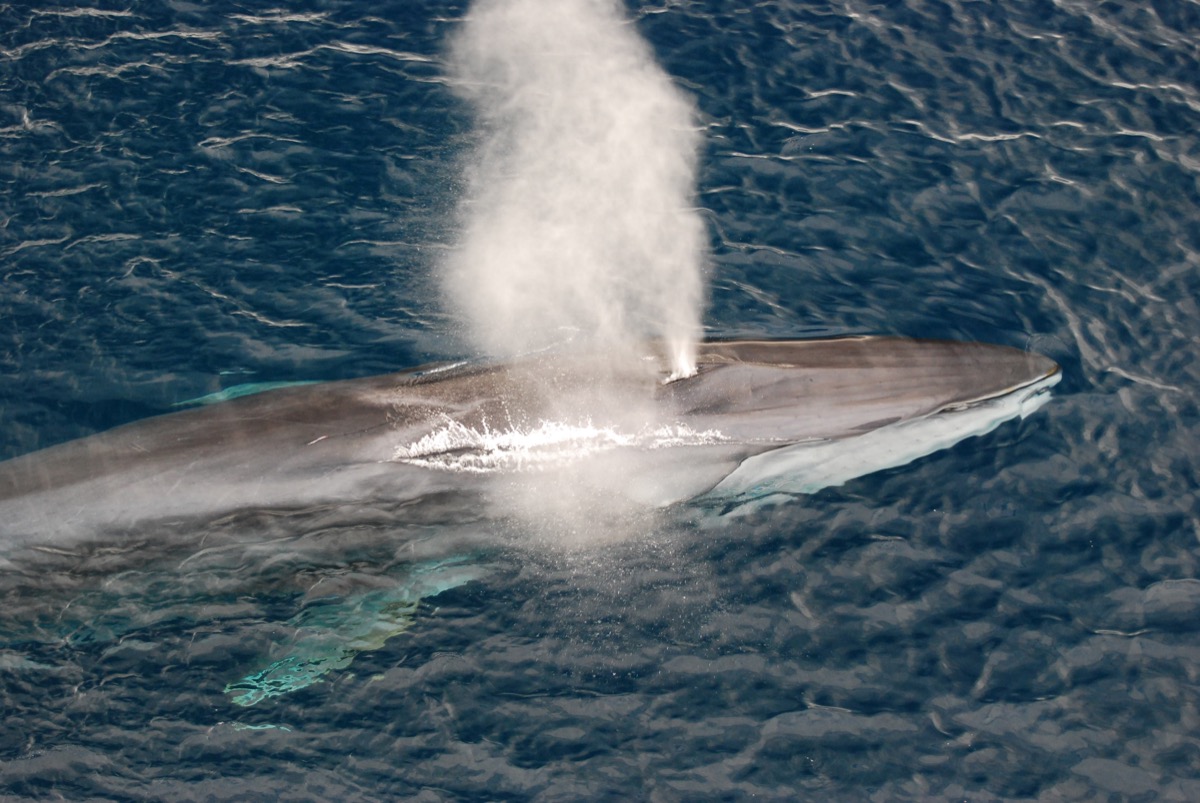
Population: Between 50,000 to 90,000
Unfortunately, the oil, meat, and baleen that can be taken from fin whales make them a valuable catch for hunters, which is why there's only 50,000 to 90,000 of the endangered swimmers left in our planet's oceans. The creatures are still killed by Iceland's commercial whaling companies, despite efforts from organizations and other countries to convince the island nation to cease their operations.
32
The Bornean Orangutan
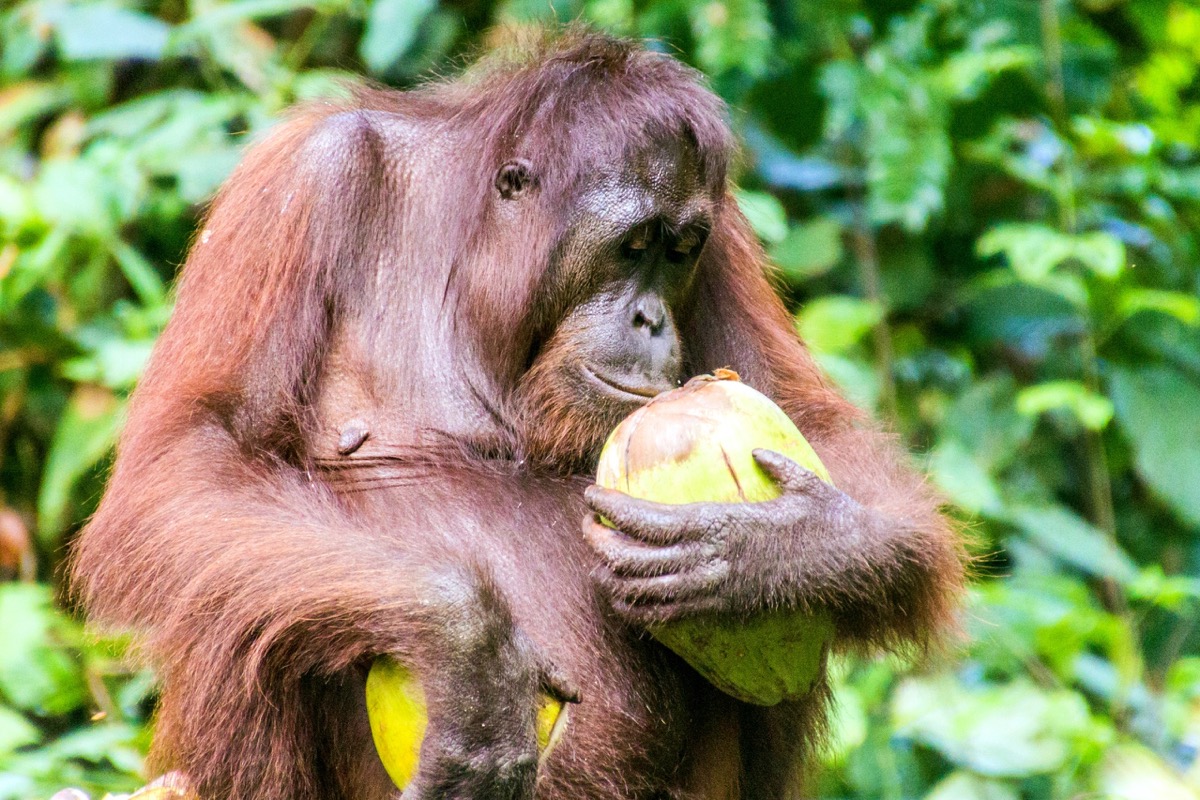
Population: About 104,700
"The plight of one of man's closest living relatives is of our making and yet we can help them recover," says Long. While their habitats are being destroyed by humans at a devasting rate, Bornean orangutans also have to face farmers, who kill the animals in order to protect crops, as well as criminals who capture the critically endangered creatures for the illegal pet trade.
33
The Eastern Lowland Gorilla

Population: Unknown
"Years of civil unrest in the Democratic Republic of Congo (DRC) have taken their toll on … the eastern lowland gorilla," explains the WWF. This has resulted in its population decreasing by an estimated 50 percent, which is why they're considered critically endangered. However, it's currently unknown exactly how many of the animals are still living in the wild.
34
The Saola
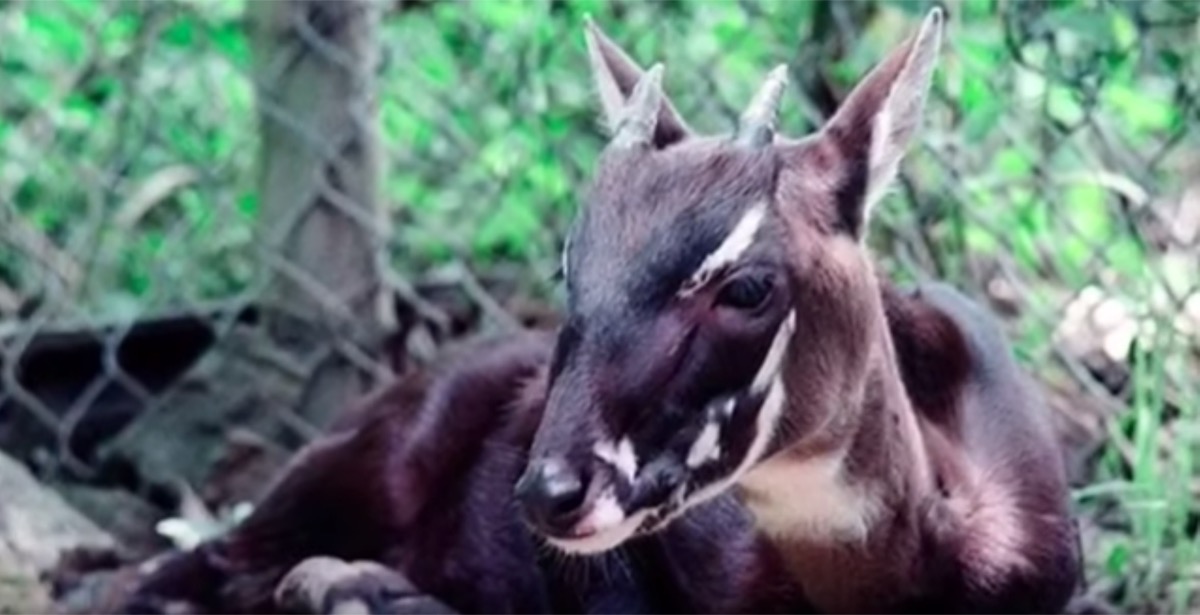
Population: Unknown
We've only known about the saola (pronounced sow-la) since their discovery in 1992. Also called Asian unicorns thanks to their impressive horns and only found in the Annamite Mountains of Laos and Vietnam, scientists have reportedly only documented the animals in the wild four times. Sadly, sightings may not increase any time soon as their habitat continues to diminish.
35
The Western Lowland Gorilla

Population: Unknown
Just like their eastern lowland gorilla and mountain gorilla relatives, western lowland gorillas are endangered, although their population numbers are unknown. Disease and poaching are direct dangers to these animals, which is why action is being taken to protect the creatures from both illness and illegal activity.
36
The Hawksbill Turtle
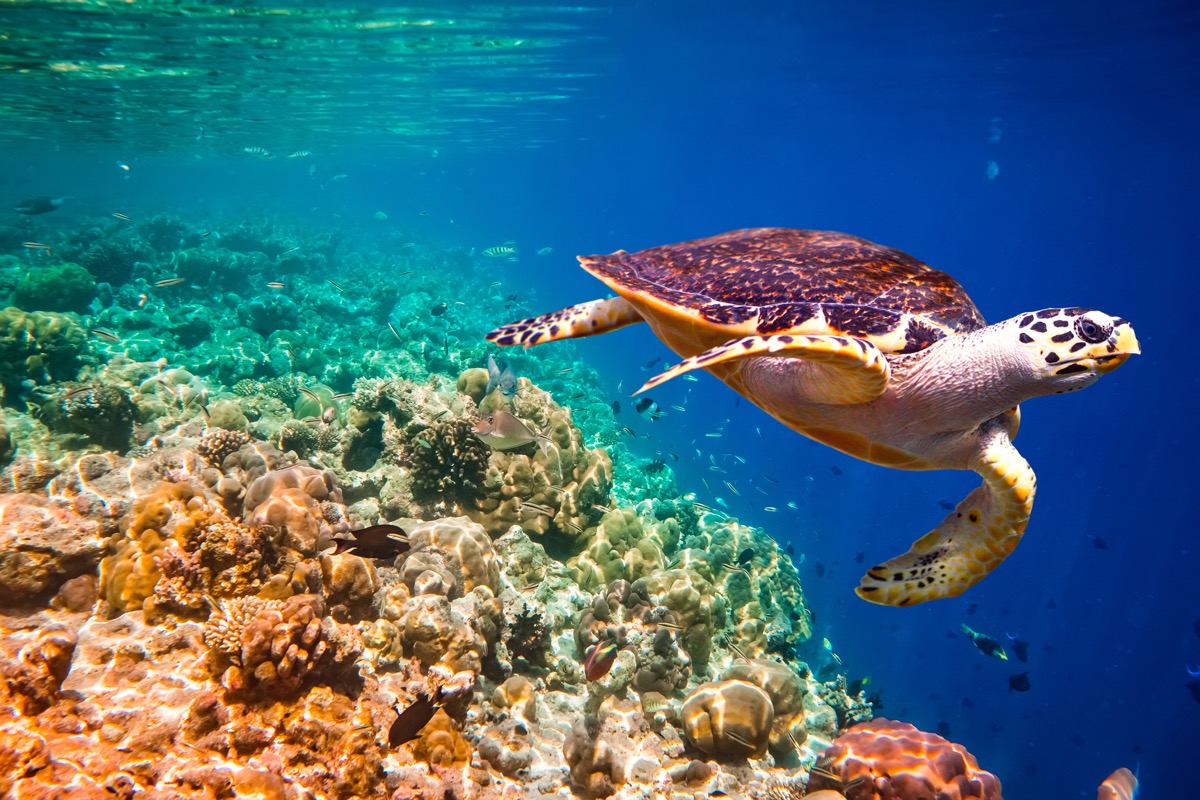
Population: Unlisted
Hawkbill turtles, whose population is unlisted on the WWF website, are critically endangered animals that are hunted for their beautiful (and therefore valuable) shells. In addition to other common threats such as loss of habitat and harmful pollution, these animals also face issues because many of their eggs are often taken by humans.
37
The Bluefin Tuna
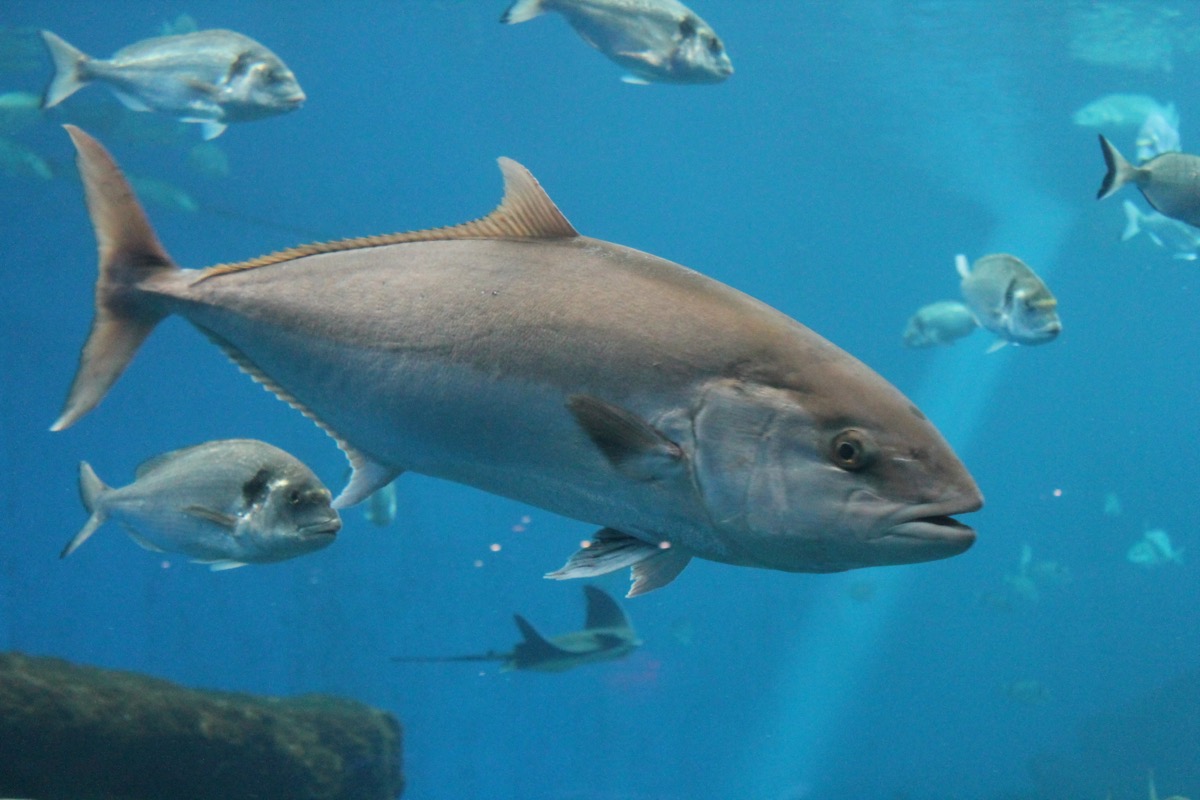
Population: Unlisted
Bluefins are the largest type of tuna, and they're often highly sought after by fishing operations. While governments have put laws in place to protect the tuna populations, overfishing and "pirate fishing" are still serious problems, putting the bluefin on the endangered animal list.
38
The Green Turtle
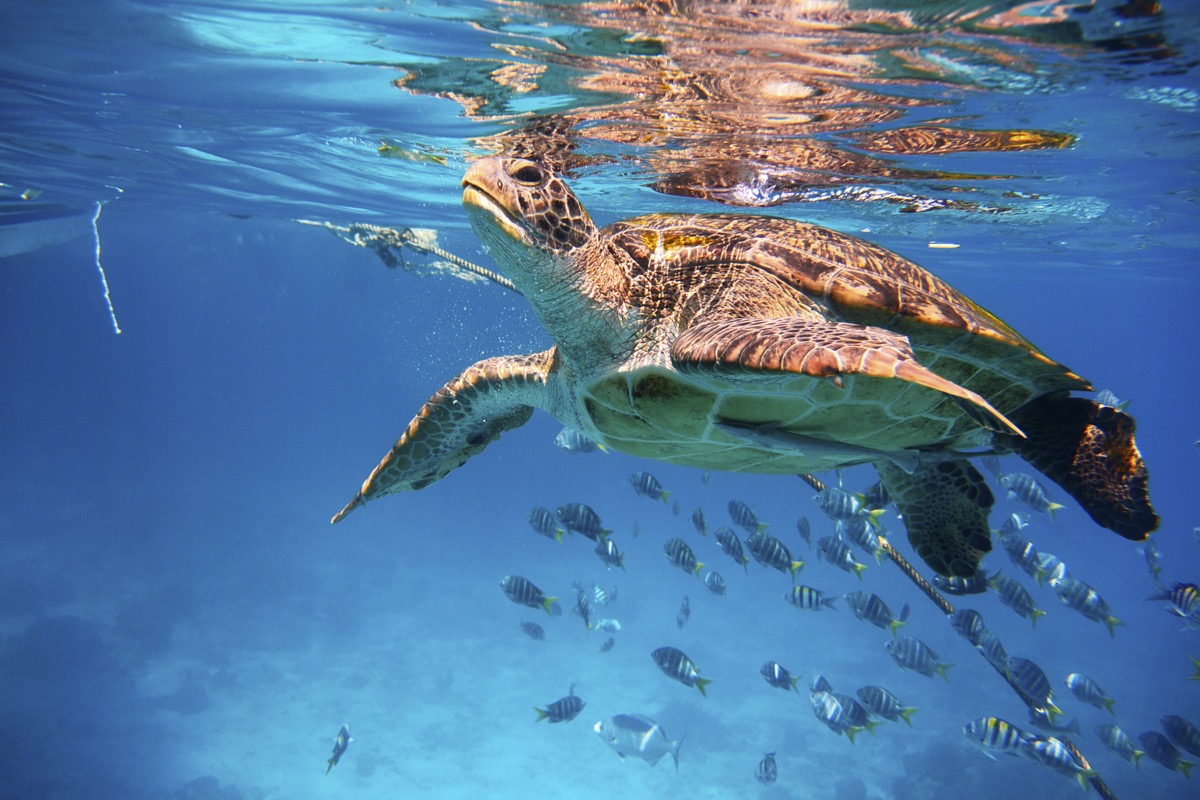
Population: Unlisted
Green turtles have also found themselves on the list of endangered animals due to the same crippling problems that other ocean animals face, including pollution, shrinking habitat, and fatal fishing nets. And with humans continuing to raid green turtle nests for eggs, the sea creatures also struggle to revive their numbers through breeding.
39
The Humphead Wrasse
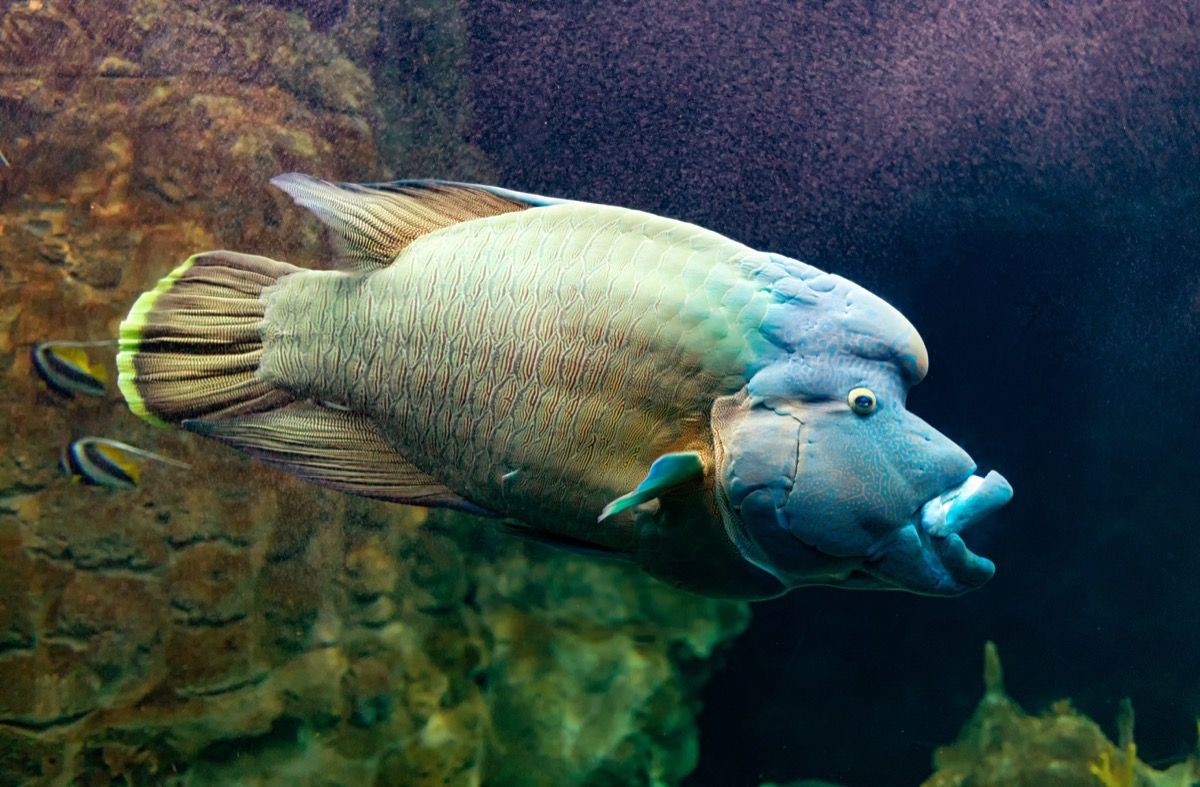
Population: Unlisted
Though this fish has a silly-sounding (if apt) name, there's nothing funny about the situation that the humphead wrasse is facing. Commercial operations to catch the creatures harm both the population's stability as well as the reef systems where the fish are found. That's why the WWF "urges local governments in the Coral Triangle to stop the trade and consumption of humphead wrasse—one of the most expensive live reef fishes in the world."
40
The Irrawaddy Dolphin

Population: Unlisted
Found in the Ayeyarwady, the Mahakam, and the Mekong Rivers of south and southeast Asia, Irrawaddy dolphins are another sad casualty of fishing nets that are set to capture other water creatures. Along with research and restoration efforts, the WWF has collaborated with The Coca-Cola Company in order to work with locals to tackle the issues surrounding these endangered animals.
41
The Sea Lions
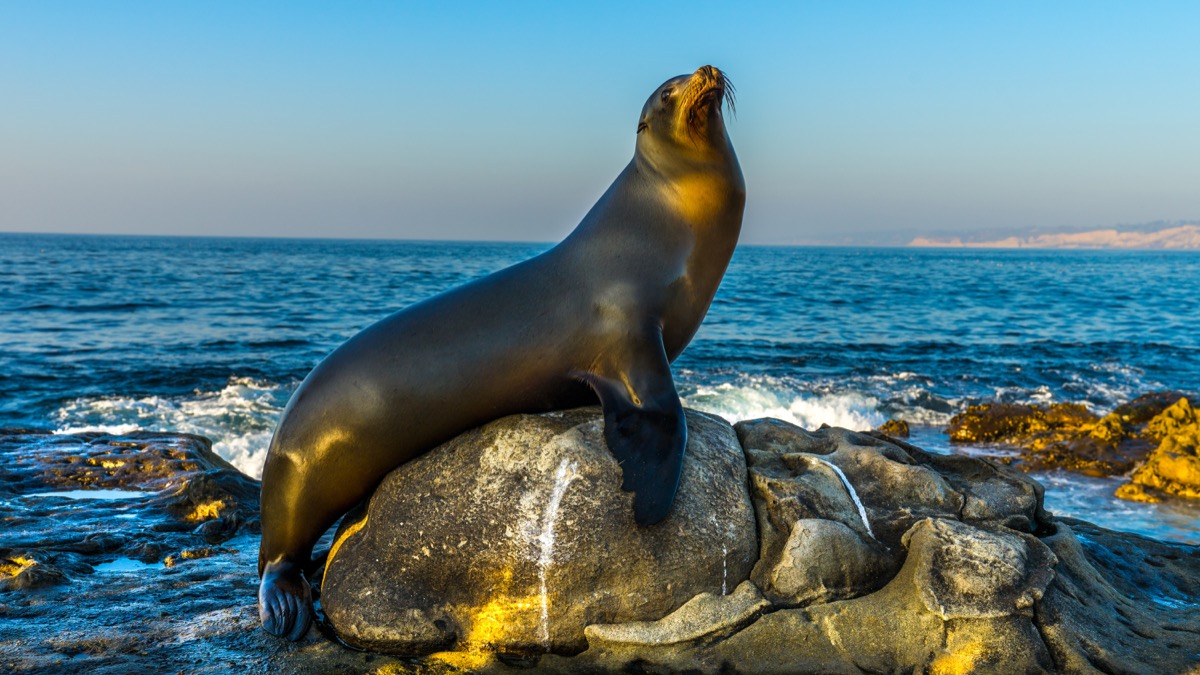
Population: Unlisted
Another creature that can find itself facing a fatal situation due to fishing nets, sea lion populations are also affected by climate change. They can even pick up dangerous diseases from other animals like dogs that are introduced into their areas. Research, education, and establishing safe havens for breeding sea lions have been critical steps in trying to save these endangered mammals.
42
The Sei Whale
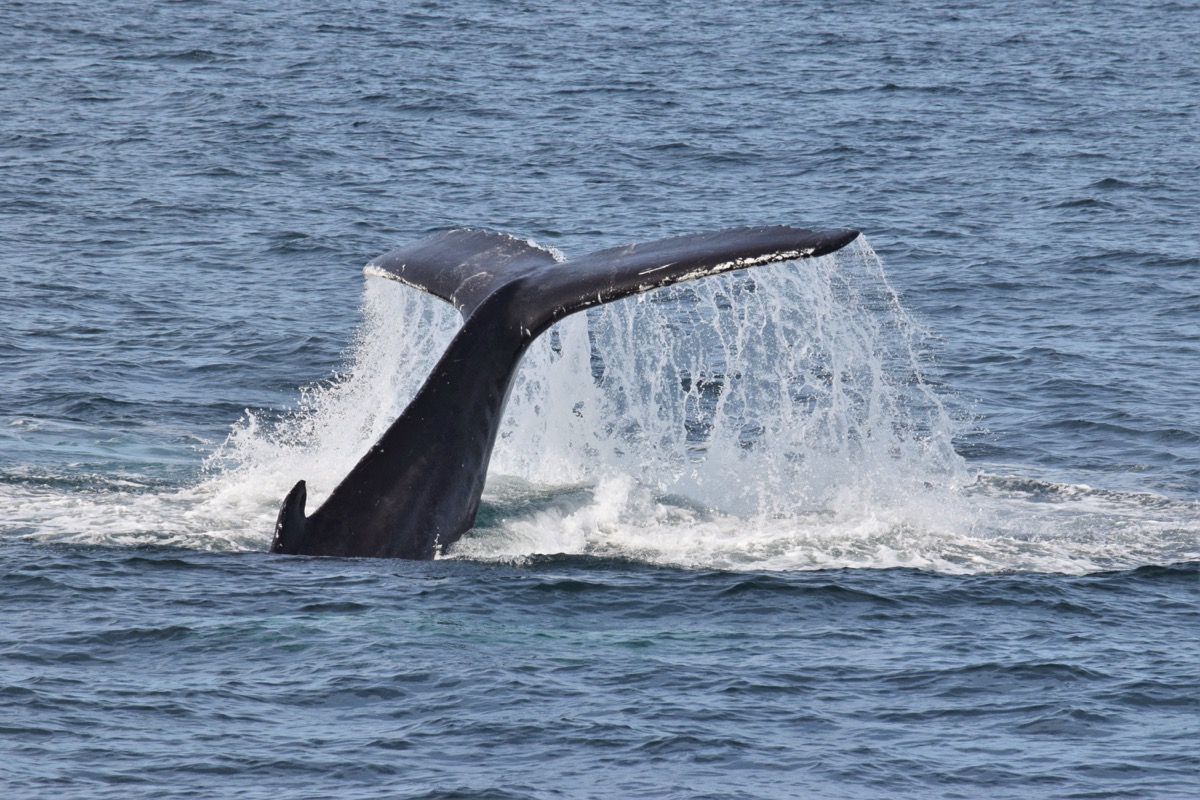
Population: Unlisted
Despite the fact that sei whales are among the fastest of their kind, they can't outrun the dangers that they face in the wild. With a population that's being harmed by climate change and pollution, the WWF also states that "50 sei whales are killed annually by Japanese whalers in the North Pacific under Japan's 'scientific' whaling program."
43
The Whale Shark
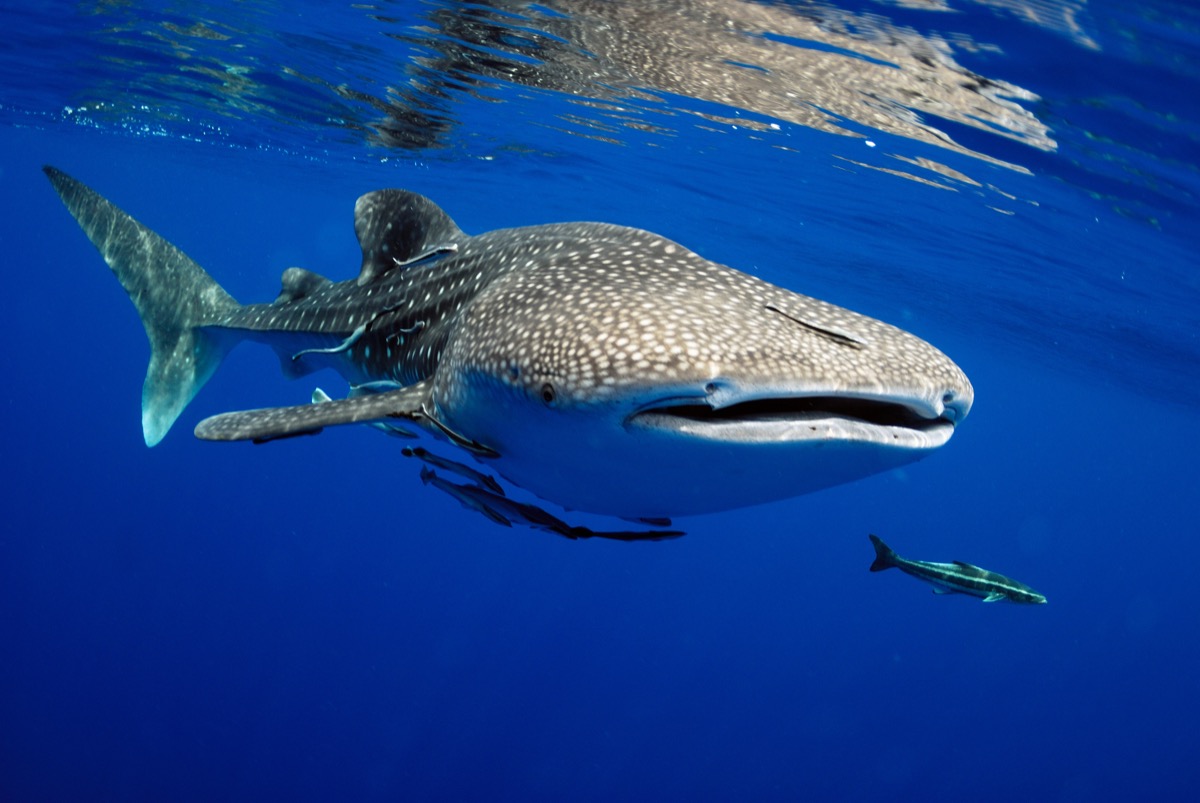
Population: Unlisted
The largest shark on the planet, averaging around 40 feet and 11 tons, whale sharks could indeed be mistaken for whales due to their massive size. And while these creatures are protected in many areas of the world, there are still places where they're hunted for their meat, oil, and fins. And for some more inspiring facts about these creatures, check out these 75 Weird But Wonderful Facts That Will Leave You Totally Amazed.
To discover more amazing secrets about living your best life, click here to follow us on Instagram!





















